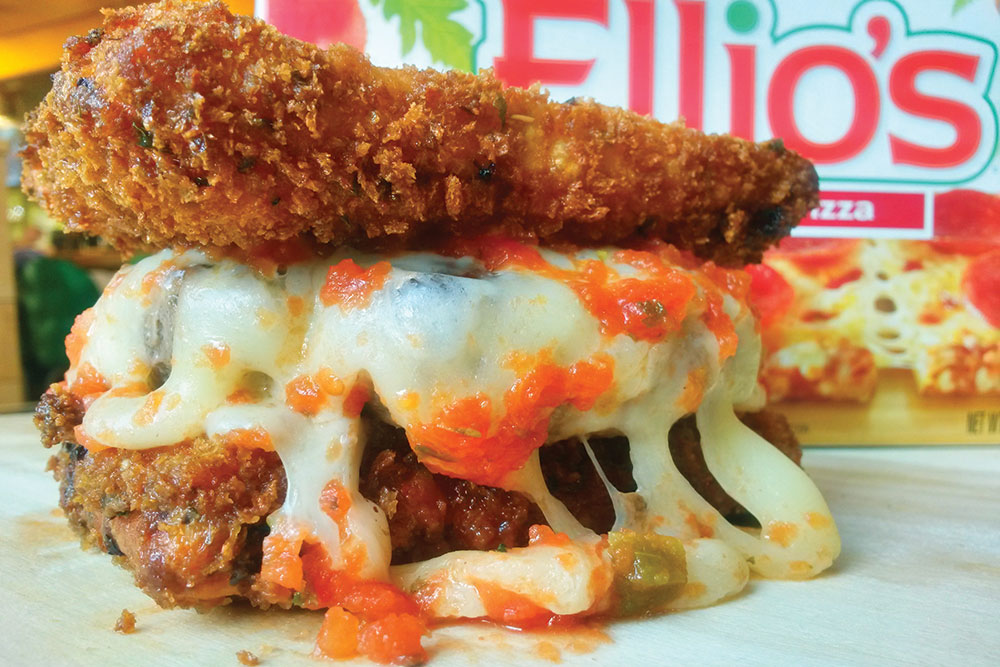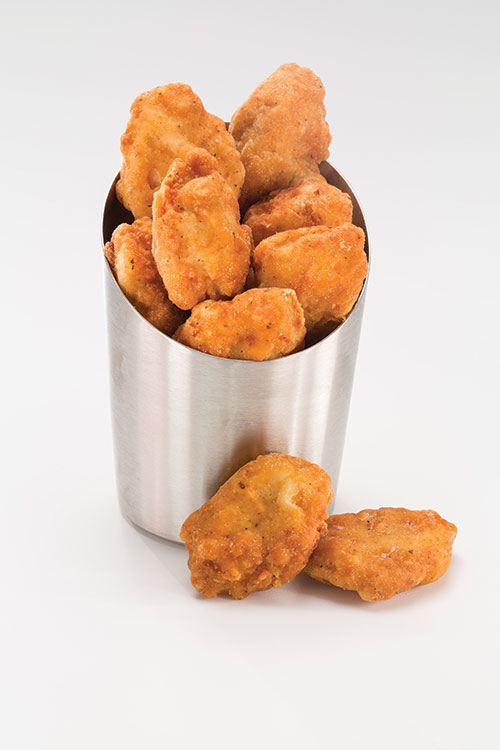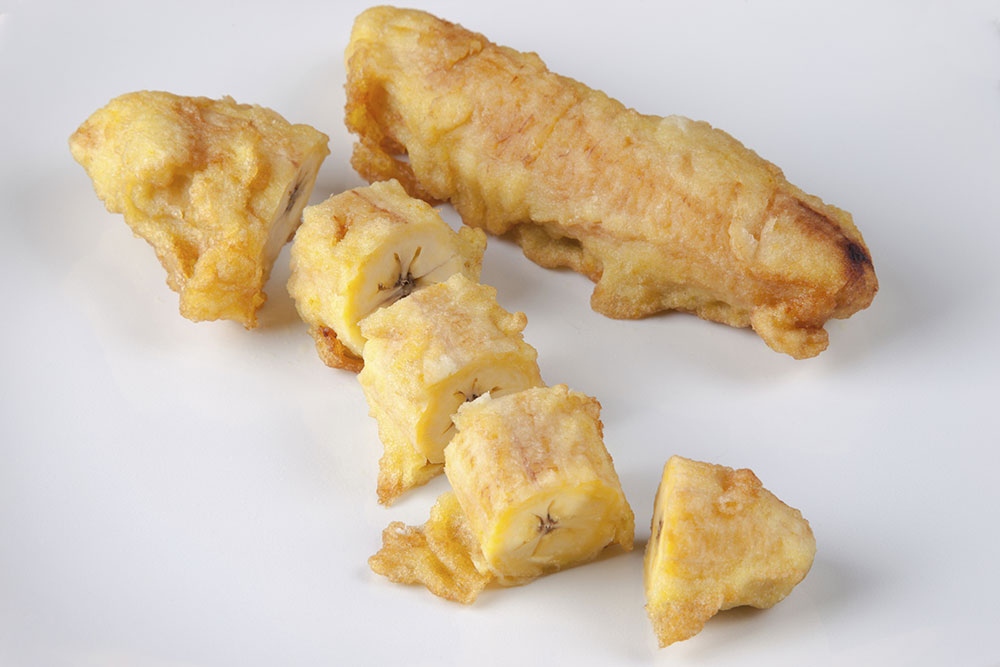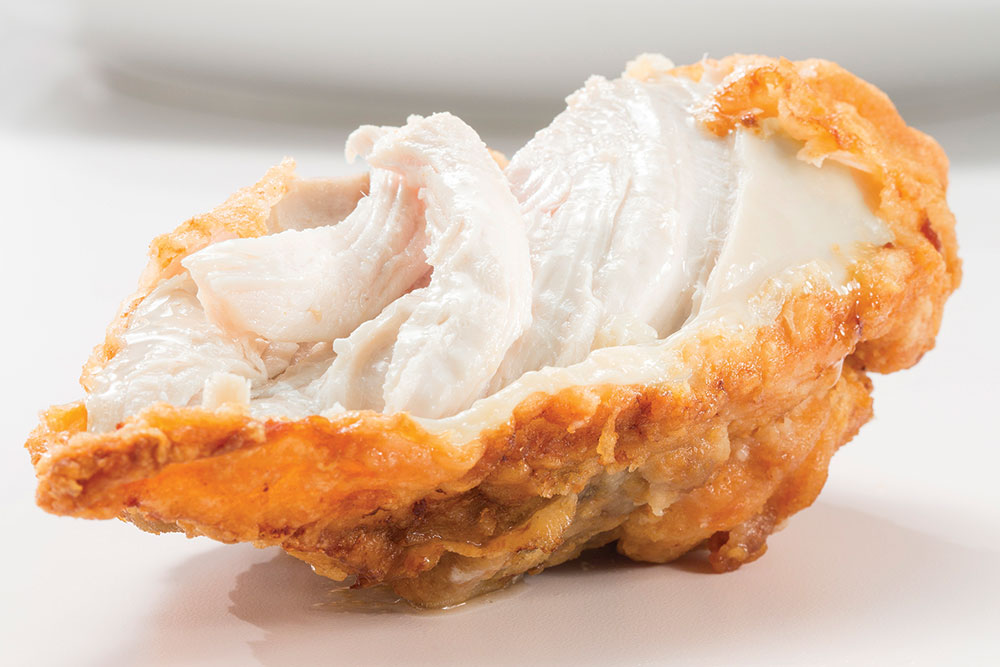Despite the trend of healthier menus, deep-fried foods never went away—they just got crazier.
Today, in state fairs, boardwalk eateries and restaurants around the country, creative chefs are frying just about everything, from Twinkies to meatloaf to sticks of butter, and Americans are gobbling them up.
From a pizzeria standpoint, adding a deep fryer just makes sound business sense. “Deep fryers open up new possibilities, and they cook foods very quickly,” says Christopher Wells, a restaurant coach and founder of Restaurant Building Blocks in Montreal. “They make it easy to diversify your menu and add high-profit items, without a lot of expense or labor—and without slowing down your execution.”
 |
|
The PYT Deep-Fried Ellio’s Burger features a “bun” made of two deep-fried Ellio’s frozen pizza slices stuffed with an Italian meatball burger patty, mozzarella, provolone and marinara. |
First, however, operators need to make sure they buy the right fryer for their restaurants. For starters, consider your building and required infrastructure, advises Mark Ladisky, senior operations associate at Synergy Restaurant Consultants in Laguna Niguel, California. “Do you have gas or electric power? What ventilation would you need? Those are the first two considerations, as well as making sure you have reviewed all of the needed safety requirements, such as a fire suppression system,” he says. “The factors that would have the biggest impact are maintenance and recovery time. In a pizzeria, both should be considered.”
David Kincheloe, president of Denver-based National Restaurant Consultants, notes that operators should also think about kitchen size and the menu items they’ll cook. Additionally, consider the width of the machine, since space under a hood is expensive, as well as how much energy the model uses, notes Chad Vendette, director of marketing for Broaster Company in Beloit, Wisconsin. “The reputation and support level that the manufacturer offers is also important,” Vendette says. “It’s better to buy a quality product up front. Talk to operators who have the system you’re looking to buy and ask how long the company has been in business.”
Wells agrees that many operators (especially in high-volume locations) prefer gas fryers, since electric models take longer to heat and have more difficulty maintaining temperature. He advises looking at online reviews and estimating your usage before buying. But, most importantly, don’t get complacent after you purchase the equipment. “People fail to maintain equipment properly,” Wells says. “Read and keep the manual, which offers troubleshooting help in case something goes wrong and outlines preventative maintenance—cleaning the burner, boiling out, changing filters, etc. Proper maintenance can prolong the life of your fryer for years.”Tank capacity—or the amount of oil the fryer will hold—is another key factor, according to Andre Neyrey, president and CEO of Manhattan Restaurant Consultants in New York. Forty-pound capacity is standard, he says. “Then decide if you want a gas or electric fryer,” he adds. “In my opinion, gas is more reliable than electric. The fryer should go up to 400° and shouldn’t take more than 15 minutes to heat up to about 375°.”
Going Deep
Now that you’ve got the deep fryer installed and ready to go, what will you make with it? Deep-fried sides and appetizers—such as French fries, onion rings, mozzarella sticks, battered mushrooms, fried ravioli and chicken wings—are perennially popular with customers. Wells believes these are no-brainers for pizzerias because, like pizza, they’re sharable. “For standard fried foods, there are fantastic frozen products out there,” he says. “You can order a little at a time, so there’s not much money needed up front, and they can be portioned out in advance to save time. But you can also create items from scratch, like making your own nachos—just cut up corn tortillas and fry them for an inexpensive appetizer.”
Wells offers several other from-scratch suggestions:
- Fried dough: Add a savory appetizer option by brushing deep-fried dough with oil and herbs, or offer it dessert-style, sprinkled with sugar and cinnamon.
- Poutin: This Canadian staple (French fries topped with cheese curds and gravy) allows for countless variations, such as adding bacon, fried onions or pulled pork on top.
- Short ribs: Try eight- or 12-piece servings for an easy-to-make, sharable appetizer that cooks within minutes. Serve with housemade sauces for added value.
 |
|
Deep fryers allow your menu to expand into classic sides and appetizers, like chicken nuggets, as well as creative concoctions, such as fried vegetables and desserts. |
“The key is to ask, ‘What can we make while the pizzas are cooking?’” Wells says. “A fryer opens up that time—so experiment with things like fish and chips, fried candy bars or arancini (fried risotto balls).” Vendette has witnessed deep-fried whole turkeys, deep-fried lobster and tempura vegetables at restaurants across the country. Kincheloe, meanwhile, suggests deep-frying donut holes and pickles, and Nadisky says many customers get excited about fried vegetables (think crunchy green beans and battered asparagus) because they’re perceived as both healthier and an indulgence.
Ultimately, Neyrey says, deep fryers offer maximum versatility. “People love fried chicken, fish and chips, and shrimp tempura, but you can also do sweets like doughnuts and funnel cakes—the possibilities of what you can fry are endless,” he says. “I like using the fryer to make garnishes, like fried shallots or crispy puffed grains like barley for composed dishes. People love the crunch.” He also suggests frying cheesecake, peanut butter and jelly sandwiches, and ice cream.
Bob Haberer, owner/operator of Homeslice Pizza and Subs (homeslicepizzaandsubs.com) in Greensboro, North Carolina, has found that a mix of ever-rotating fried items both engages his customers and allows him to test their tastes. He sells a slew of traditional favorites such as Buffalo wings, jumbo chicken fingers, house-cut chips and fried ravioli, while past experiments with pizza logs, pretzel bites and jalapeño poppers have been less successful. However, his bestsellers are Pizza Balls, deep-fried dough balls stuffed with mozzarella and pepperoni. “We’ve put in other ingredients as well, like spinach, steak and chicken. They’re tennis ball-size, and we offer them for $1 on Thursdays for dine-in,” Haberer says. “We add and subtract menu items, so it’s trial and error, but choice equals value to customers.” Finally, to keep fried foods tasting great from the kitchen to a customer’s home, he spends a little extra for foil liner and vented boxes to maintain crispness.

Fried Bananas |
| Courtesy of Manhattan Restaurant Brokers & Consultants4-5 bananas Flour (for dredging bananas) Vegetable oil (for deep-frying) 1 egg 8 oz. ice-cold water ½ c. flour, sifted with ½ tsp. baking soda Honey Heat the oil in the deep fryer to 375°F. Mix up the batter ingredients with a whip until somewhat frothy. Cut the bananas into 1” chunks. Roll them around in the flour until lightly coated. Dip a few banana pieces into the batter and fry until golden. Drain on paper towels. Fry in small batches until they’re all used. Heat honey in saucepan or microwave until liquid and hot; pour over the bananas. Serve with a scoop of vanilla ice cream. |
Frying Outside the Box
Everyone loves traditional favorites, but some chefs are getting crazily creative with their deep fryers. At PYT, a burger spot in Philadelphia, executive chef Kim Nalcoln has fried up everything from PB&J sandwiches to Twinkies for use as hamburger buns. Recently, her Deep-Fried Ellio’s Burger featured a “bun” made of two Ellio’s frozen pizza slices (dredged in flour, egg and homemade Italian breadcrumbs, then deep-fried) filled with an Italian meatball burger patty, mozzarella, provolone and marinara. Deep-fried wontons filled with frozen Pabst Blue Ribbon beer topped The Fried Chicken & Beer Burger. Nalcoln has also experimented with taco shells made solely of fried bacon and deep-fried French toast for brunch. “We like trying novelty items as something to indulge in—it’s a science lab in our kitchen!” laughs Nalcoln. “We have ‘regular’ burgers, but our deep fryers allow us to escape from the seriousness. It’s fun to take things over the top.”
Meanwhile, Forcella (forcellaeatery.com) has grown to three locations in New York based on the success of its fried pizzas, brought to the States by owner Giulio Adriani, who was inspired by regional montanara pies from Italy. He flash-fries pizza dough, tops it and bakes it in a wood-fired oven just long enough for the crust to color and the cheese to melt (the baking also helps evaporate some of the oil). “When we started, The New York Times did a big article on the fried pizzas, and they became very popular,” Adriani recalls. “Now they’re my best-selling items. We also do a fried calzone, which we can stuff with anything and put right into the deep fryer, with no oven needed.”
But Adriani isn’t resting on his fried-pie laurels; he also uses his deep fryer for arancini stuffed with tomato, basil and mozzarella; eggplant Parmigiana; calamari; and Graffe, a new donut-like creation made with a potato-and-flour dough stuffed with cream custard or marmalade and dusted with sugar. “In general, using simple ingredients makes a lot of profit for a pizzeria,” says Adriani, who shoots for 18% food cost for his dishes. “And, of course, a deep fryer is very helpful for making those profits!”
The Safety Factor
Hot temperatures plus slippery liquids can lead to nasty accidents if employees don’t practice safe habits, so proper training is a must when dealing with deep fryers. “Make sure there’s a place to unload the cooked foods; it has to be close so an employee isn’t dripping oil on the floor,” Wells advises. “You may want to invest in a rack on the side of the fryer on which to put finished food. Also make sure employees working the fryer aren’t using their cell phones—these can fall in and create a huge mess! Treat the area near the fryer as a major safety zone; employees need to be very cautious, even during a rush.”
PYT engages in thorough training on how to use equipment, including when and how to drop finished items from the fryer, while posted signs remind employees how often to change the oil. For his part, Haberer notes that he hasn’t had a single worker’s comp issue in two years, thanks to training employees to be clean and safe when working with fryers (i.e., not swinging baskets outside the frying area). Ladisky also advises that employees wear heat-resistant gloves and eye protection when working with hot oil or cleaning chemicals and use timers when cooking items in the fryer for optimal product consistency.
“It’s also really important to make sure the fryer is in a sturdy location,” Neyrey adds. “I prefer to have wheels on my deep fryer, because the peg legs that come on deep fryers can bend and eventually break off completely, which can be incredibly dangerous. Also, make sure the oil is filled up to the fill line; if there’s too much oil in the fryer, it can overflow when you add food.”
Finally, filtering and changing the oil will be a frequent requirement. Like changing a car’s oil, this is based on the usage and model of fryer, Wells says. Generally, you should change the oil when it’s difficult to see the bottom of the fryer due to discoloration. Some pizzerias will need to change oil every week or two but should filter every day or couple of days; others will need to change oil every day. “Simply put, change the oil as soon as flavor or operations are impacted in a negative way,” Ladisky recommends. “How hot you run the fryer, how much product it handles and what products you cook all impact the fryer’s lifespan, so if it looks bad, smells bad or tastes bad, that would be a clear sign that it is time for an oil change. Turning off fryers or turning them down during off-peak periods can not only save on equipment wear and utility usage but will also extend the life of the oil.”
| Checking the Oil |
| Using the right oils in your recipes can make the difference between a finger-lickin’ phenomenon and a deep-fried dud. We asked our experts for their insights on this key issue:
Canola and Peanut Oils—Canola oil gets the nod from Chad Vendette, director of marketing for Broaster Company in Beloit, Wisconsin. It has no trans fat, has a general lower fat content and doesn’t transfer flavors as easily. Andre Neyrey, president and CEO of Manhattan Restaurant Consultants in New York, also prefers canola for its neutral flavor and high smoke point. Some businesses add a percentage of peanut oil for flavor, but this can be tricky among today’s allergen-sensitive population. Sunflower and Soybean Oils—In addition to canola oil, Forcella, a three-store pizzeria chain in New York, uses sunflower oil for its healthier properties. Kim Nalcoln, executive chef at PYT in Philadelphia, uses soybean oil for its high-consistency burn, but she notes that canola or peanut oil are ideal for jazzing up blander foods. Mixes—Bob Haberer, owner of Homeslice Pizza and Subs in Greensboro, North Carolina, creates a mix of half rice bran oil and half standard frying oil. He likes the rice bran because it’s healthier and doesn’t burn. Grapeseed Oil—Pressed from the seeds of grapes, grapeseed oil allows for superhigh temperatures, but it’s also very expensive and therefore generally unsuitable for deep-frying in a restaurant setting. |















